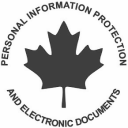Social Phobia Inventory (SPIN)
Recommended frequency: Every 2 weeks
Download Sample
Social Phobia Inventory: Summary
The Social Phobia Inventory (“SPIN”) is a self-rated scale used to identify and monitor social anxiety disorder (or social phobia). Prior to its publication, assessments of social anxiety disorder were often time-consuming or relied heavily on clinical interviews. The SPIN offers a convenient alternative that can be self-administered, which enables it to be used within a variety of settings, including clinical practices, research studies, and even self-guided contexts.
The SPIN was initially developed because the available self-rated social phobia scales did not assess the core aspects of the conditions, mainly the spectrum of fear, avoidance, and physiological symptoms—all of which are clinically relevant. Some additional measures for anxiety disorder include clinician administered scales, such as the Behaviour Rating Inventory of Executive Function SP Scale (BRIEF-SP) and the Liebowitz Social Anxiety Scale (LSAS), as well as self-report scales such as the Fear of Negative Evaluation Scale (FNE), Social Avoidance and Distress Scale (SAD), Self-Statements During Public Speaking Scale (SSPS), Social Interaction Anxiety Scale (SIAS), Social Phobia and Anxiety Inventory (SPAI), Social Phobia Scale (SPS), and the Social Thoughts and Beliefs Scale (STABS). The SPIN is the briefest self-report measures available, and has demonstrated strong psychometric properties, and shows significant promise as a measurement tool for the screening and treatment response of social phobia. The application of the SPIN with people with DSM-IV criteria social phobia has yet to be investigated, however the measure demonstrates that it can effectively distinguish between individuals with and without social phobia.
About the SPIN
Developed by Connor et al., the SPIN consists of 17 items that assess each of the core symptom domains of social anxiety disorder: fear of social situations, avoidance of these situations, and physiological symptoms experienced in these contexts. The scale also asks about four autonomic symptoms—trembling, blushing, heart palpitations, and sweating—which distinguishes it from many other social anxiety rating scales. The scale is rated based on a person’s experience over the prior week and measures the extent of distress, rather than the frequency of symptoms.
Through research, the SPIN has been shown to be effective at distinguishing between individuals with and without social anxiety. Studies have shown that the SPIN offers good internal consistency, meaning that its items are consistent in measuring the construct of social anxiety. The SPIN also correlates well with other known measures of social anxiety and has demonstrated sensitivity in measuring changes in symptom severity over time.
Due to the research and evidence establishing its effectiveness, the SPIN is now widely used in research and clinical practice for both screening and monitoring purposes of social anxiety disorders. The ease of administration and interpretation of the SPIN has contributed to its widespread adoption and use in both clinical and research contexts.













